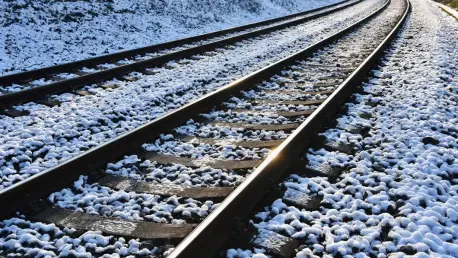Welcome to an insightful conversation on railway operations during the harshest winter conditions. Today, we’re speaking with Rohit Laila, a seasoned expert in the logistics industry with decades of experience in supply chain and delivery. Rohit’s passion for technology and innovation has made him a leading voice in advancing rail solutions, especially when it comes to tackling the challenges of extreme cold. In this interview, we’ll explore how railroads prepare for winter, the operational hurdles they face, and the cutting-edge technologies transforming the industry’s approach to sub-zero temperatures.
How do railroads kick off their preparations for winter weather, and at what point in the year does this planning typically start?
Railroads usually begin their winter preparations well in advance, often in late summer or early fall. This early start is crucial because winter can hit hard and fast, especially in northern regions. The process starts with reviewing past performance during cold months, identifying weak spots in the network, and conducting audits to clear debris or hazards that snow could cover up. They also inspect infrastructure like tracks and switches, pre-order supplies such as winter gear for staff, and ensure equipment like snow blowers and heaters are ready. It’s all about being proactive—waiting until the first snowfall is simply not an option.
What are some of the toughest challenges railroads encounter during extreme cold and heavy snow, and how do these impact daily operations?
Extreme cold and snow bring a host of problems, from frozen switches and tracks to locomotive engine issues. When temperatures drop below zero, ice can jam critical components like switches, causing delays or even derailments if not addressed. Snow accumulation can block tracks or obscure signals, while cold can cause fuel to gel or brake systems to fail. These issues slow down operations, force rerouting, or even halt trains altogether, which disrupts schedules and affects customers relying on timely deliveries. Safety becomes a bigger concern too, as employees face slippery conditions and hidden hazards. It’s a domino effect—every small issue can cascade into major disruptions.
Can you describe the specific measures railroads take to ensure their tracks and equipment can withstand sub-zero temperatures?
Absolutely. Railroads take a meticulous approach to winterizing their systems. For tracks, they install switch heaters to prevent ice buildup and use snow fences in drift-prone areas to minimize accumulation. Drainage systems are cleared to avoid flooding from snowmelt. As for equipment, locomotives and railcars undergo thorough inspections—air brake systems are insulated, fuel additives prevent gelling, and batteries are tested for cold-weather reliability. Some railroads even run cold-weather tests on new gear to ensure it holds up. It’s a detailed checklist, but skipping any step can mean breakdowns when the mercury plummets.
How do railroads leverage weather forecasts in their winter planning, and how reliable do you find these predictions for guiding preparations?
Weather forecasts are a cornerstone of winter planning. Railroads analyze meteorological data and models to predict the severity, timing, and location of winter conditions. This helps them decide where to stage snow removal equipment or extra staff and when to adjust train schedules. While forecasts aren’t always spot-on—especially for pinpointing exact snowfall or temperature drops—they provide a solid framework for preparation. Most railroads build in extra buffer time and resources because they know predictions can miss the mark. It’s about balancing the science of forecasting with the reality of unpredictable weather.
What role does collaboration play between railroads, suppliers, and customers in managing winter weather challenges?
Collaboration is everything during winter. Railroads work closely with suppliers to ensure timely delivery of critical gear like switch heaters or fuel additives, often coordinating well before the cold sets in. With customers, there’s a focus on communication—sharing updates on delays, preparing facilities for snow and ice, and sometimes adjusting shipment schedules. Railroads also team up with each other, especially during major storms, to share resources or coordinate traffic flow through joint dispatch centers. It’s a network-wide effort; no one can handle winter alone, and strong partnerships help keep goods moving despite the challenges.
From your perspective, how do harsh winter conditions in regions like Canada influence preparation strategies across a broader North American rail network?
Operating in places like Canada, where winters are brutal, shapes a railroad’s entire approach to cold-weather readiness. The extreme conditions—think heavy lake-effect snow and temperatures down to -40°F—teach hard lessons about resilience. Railroads with experience in these areas often develop rigorous contingency plans, like staging specialized snow-clearing equipment or using advanced forecasting for rapid response. These strategies then get adapted across their North American networks, even in milder regions, because they’ve seen firsthand how quickly winter can derail operations. It’s about applying battle-tested methods everywhere to minimize risk.
Can you explain why shortening train lengths during certain winter conditions is a common practice, and how it enhances safety?
Shortening train lengths in extreme cold or heavy snow is a safety-driven decision. Longer trains are harder to control in slick or icy conditions, and the risk of a break-apart—where cars separate due to stress or brake issues—increases. Cold can also strain air brake systems over a longer consist, making stops less predictable. By running shorter trains, railroads reduce these risks, improve handling, and ensure better response times if something goes wrong. It might slow down throughput, but safety trumps speed every time in those conditions.
How do innovations like idle reduction technologies help railroads save fuel and reduce wear on equipment during winter?
Idle reduction technologies are game-changers in winter. Products like auxiliary power units run off the locomotive’s fuel supply to provide heat for coolant, oil, and the cab without keeping the main engine idling. This cuts down on fuel use—sometimes saving several gallons per hour per locomotive—and reduces engine wear from constant restarts in freezing temperatures. It also lowers emissions, which is a bonus for sustainability goals. In sub-zero weather, when idling is tempting to keep things warm, these systems keep operations efficient without sacrificing reliability.
What advice would you give to railroads or logistics professionals looking to improve their winter preparedness in the coming seasons?
My advice is to start early and think holistically. Don’t wait for fall to begin inspections or order supplies—begin in summer to beat the rush and catch issues before they compound. Invest in technology, whether it’s switch heaters, remote monitoring, or idle reduction systems, because these tools pay off in reliability and cost savings. Train your teams thoroughly on winter protocols and safety gear, and keep communication tight with partners and customers. Finally, always build in contingency plans—winter is unpredictable, and having backup resources or alternate routes can be the difference between a minor hiccup and a major shutdown.









